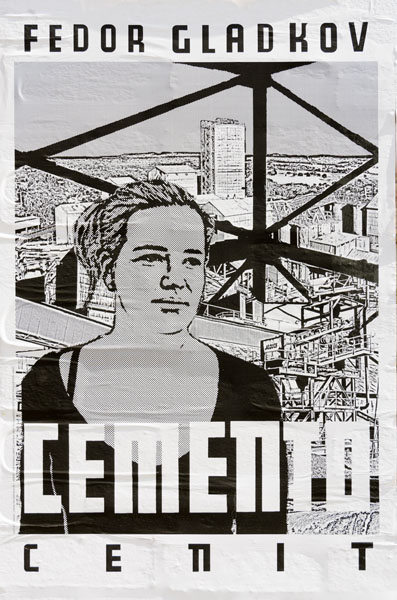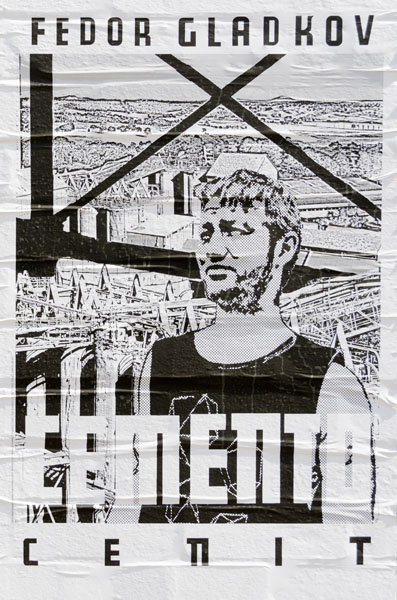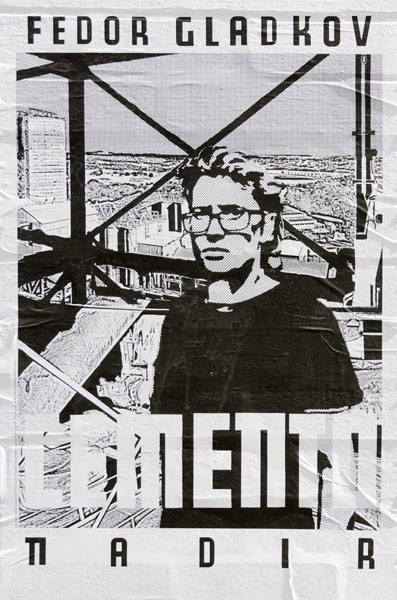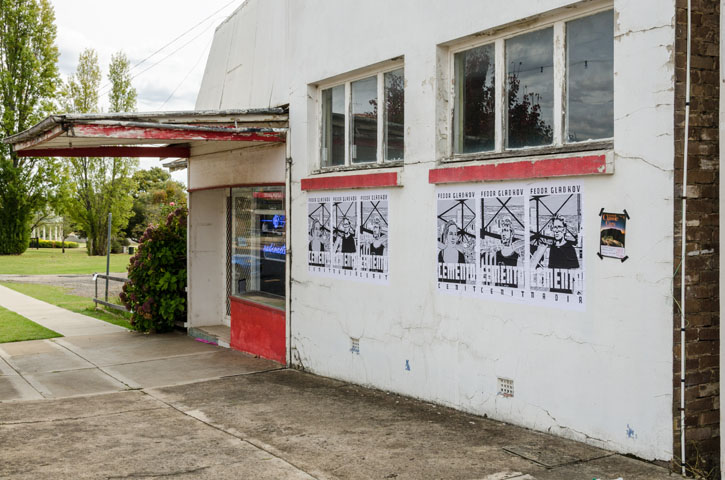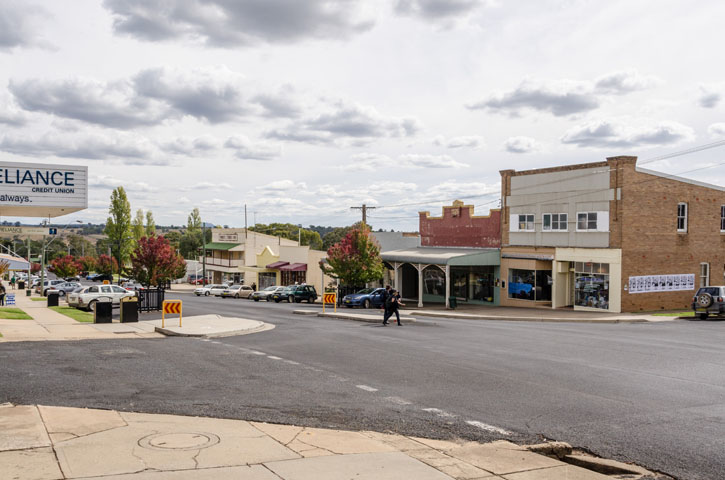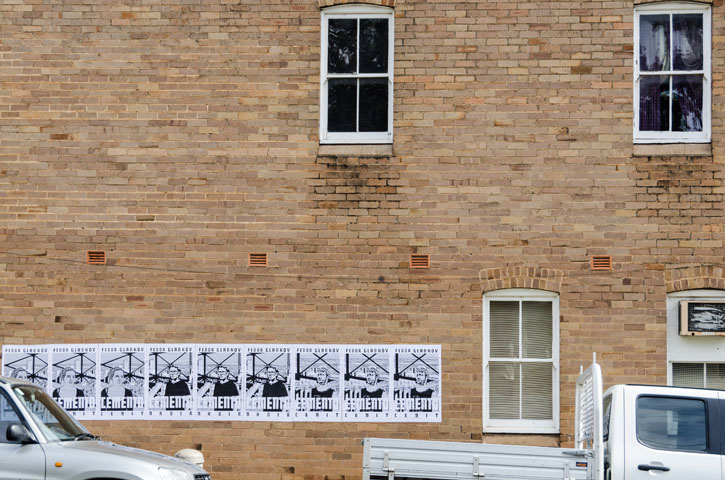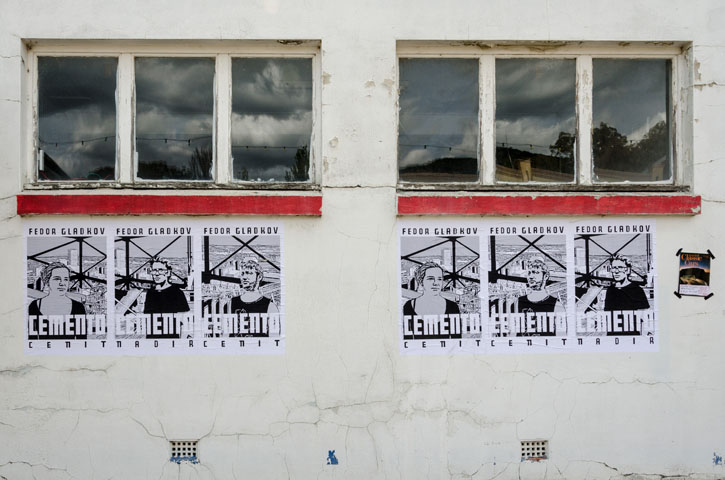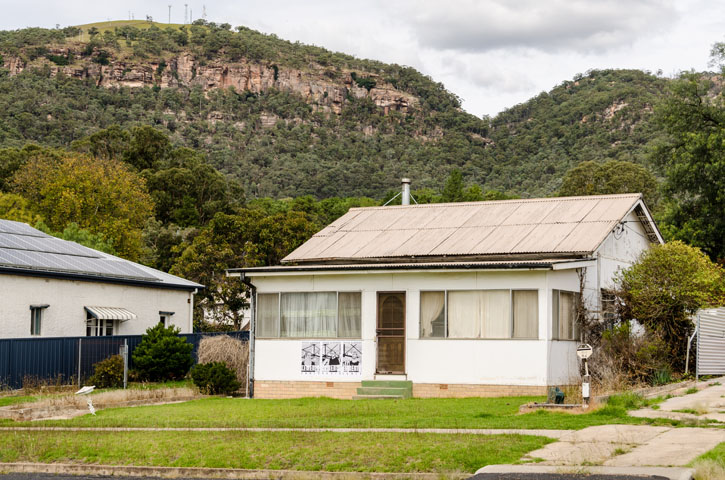[respect for Mariano Rawicz, Madrid: Cenit, 1933]
Kandos Cement Works images: Karon Grant
Poster prints 100 gsm bond paper, 594 x 841 mm
Created for Cementa 15 Contemporary Arts Festival Kandos, 9 to 12 April 2015
Cenit and Nadir, 2015
The protagonist, a returning hero, comes back to a home town in painful transition and to its cement factory being reorganised for the massive new national effort. Fedor Gladkov’s novel, Tsement (1925) provides a reference point for thinking about 21st century Kandos a small industrial town on the NSW Central Tablelands which has recently seen the closure of its one big employer, the Kandos Cement Works. Instead of the two young vagabonds used by Mariano Rawicz, in his 1933 cover design for the paperback edition of the novel young people from the Kandos district have been superimposed on a photomontage of the now closed Kandos Cement Works.
What does the future hold now that the glories predicted to be produced by Industrialisation in the early twentieth century have fallen away?
Background
Author: Fedor Vasilievich Gladkov was born in 1883, in Chernavka, near Saratov, Russia. His best-known novel, Tsement (1925; Cement), was the first postrevolutionary novel to dramatize Soviet industrial development. The novel is interesting because of its portrayal of the sociological effects of early Communism, especially after the sexes are suddenly decreed equal in the labour force of the local cement factory. Although crudely written, this story of a Red Army fighter who returns to find his hometown in ruins and dedicates himself to making industry thrive again anticipated in two important ways the future trends of Soviet literature. Its theme of reconstruction was to become commonplace in Soviet fiction following an official demand in 1928 for “five-year-plan novels”, that is, novels about the economic development of the Soviet Union. In addition, its positive hero, whose confidence overcomes apathy and despair, became a model for the heroes of socialist realism.
Designer: Mariano Rawicz, a Ukrainian graphic artist and designer who settled in Spain in 1930. Cemento (cement) cover design was an outstanding photomontage by Mariano Rawicz in which a photograph by Walter Rueter of two young German tramps is superimposed on a soviet industrial landscape and labelled in Cyrillic type. Publication details: Cemento (cement) text, Fedor Gladkov Madrid: Cenit, 1933 195 x 125mm, 344 pages. paperback, cover illustrated with photomontage by Mariano Rawicz.
Installation photographs courtesy Karon Grant

